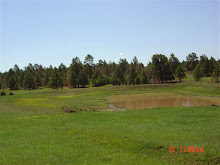The Wall Street Journal--Safety Device Questioned in '04
By RUSSELL GOLD
Federal regulators learned in a 2004 study that a vital piece of oil-drilling safety equipment may not function in deep-water seas but did nothing to bolster industry requirements.
The equipment, called shear rams, is supposed to seal off out-of-control oil and gas wells by pinching the pipe closed and cutting it.
As oil companies drilled wells in deeper water, the shear rams had to become stronger and manufacturers responded. But the federally commissioned study questioned whether enough was known about the force required to shear off a pipe at these depths to set proper standards.
.Experts theorize the rams may have failed to work as expected in the Deepwater Horizon disaster, contributing to accident that left 11 dead and an open pipe spewing crude into the Gulf of Mexico.
BP PLC, the giant British oil company that leased the Deepwater Horizon, says it learned from evacuees who escaped the burning rig that workers had tried to activate the shear rams. BP was leasing the rig from Transocean Ltd. and most of the workers were employees of Transocean.
A Transocean spokesman declined comment.
The shear rams are an integral part of the giant blowout preventer, which sits on the sea floor, 5,000 feet below the surface. R. Scott Amann, a spokesman for the sheer ram manufacturer, Cameron International Corp., said he did not know exactly what happened.
"We remind you that our devices have never been involved in an accident like this," he said.
The cause of the oil well blow-out remains unclear. Petroleum engineers say it was probably related to the cementing process, which is supposed to secure the well and prevent oil and natural gas from escaping by filling in the space around the pipe and plugging the well.
But once workers lost control of the well, which was spewing a flammable mixture of crude oil and natural gas, the blowout preventer became the only option for stopping the flow.
Investigators are expected to focus on whether the blowout preventer received a signal from workers on the rig. The Deepwater Horizon wasn't equipped with a backup remote trigger that is a common drill-rig requirement in other oil-producing nations, but not the U.S.
If the blowout preventer did receive the signal, experts say, a critical question is why the rams didn't seal off the well.
Some newer rigs have blowout preventers with two separate pairs of shear rams—providing an added safeguard in case one shear malfunctions or hits an obstruction in the pipe. The Deepwater Horizon had a single pair of shear rams.
The Interior Department's Minerals Management Service, which regulates offshore drilling, questioned whether shear rams were strong enough to shear through a pipe.
In two offshore incidents in 2001, the rams didn't work as expected. The agency issued new rules in 2003 instructing the oil industry to make sure the rams would work reliably.
In 2004, a study commissioned by the MMS raised significant questions about the ability of rams to cut through the stronger pipes used in deep-water drilling. Those thicker pipes—as well as the shear rams—must withstand the enormous pressures found at 5,000 feet below sea level.
The study noted there was no agreement on how to determine if the sheer rams would work properly in deep-water conditions. More>>>






0 comments:
Post a Comment